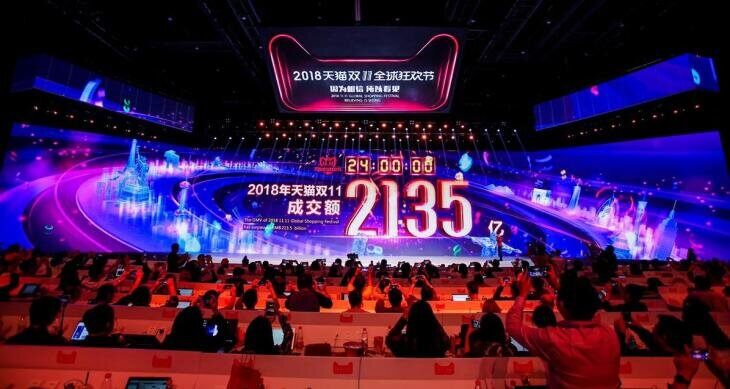“Look beyond the numbers” Alibaba urged in the wake of this year’s Singles Day event, in reference to its new sustainability and accessibility initiatives.
At Hot Pot China we also advocate a firm look behind the headline stats for all brands looking to enter the Chinese market.
It’s alarming how many global brand executives continue to perceive China as an immediate low hanging fruit, underestimating the complexities involved in entering the market. Revenue projections for China are often based around macro industry reports and headline figures released around shopping festivals such as Singles Day. For this reason, our team works closely with clients to enable a more nuanced and realistic understanding of a brand’s commercial prospects in China, drawing out different possible financial eventualities across a 5-year period.
Head of Commercial Strategy, Adam Sandzer, outlines his thoughts on revenue and cost variables for brands looking to expand in China.
Forecasting revenue
Even brands with a Midas touch globally may not achieve the returns they expect from a revenue perspective in China from the outset.
At Hot Pot we create bespoke category definitions to understand the actual size of the specific market for our clients. We then couple this with competitor benchmarks and the brands’ current China performance, particularly awareness and visibility on platforms like Baidu, Tmall, WeChat and Little Red Book. In general, the stronger the existing performance, the greater the chance of hitting the ground running with sales. However, in cases where China traction is negligible or low it is likely to take a lot greater effort (and potentially investment) to realise revenue ambitions.
The latter can prove frustrating, especially for commercial and finance stakeholders, but it’s important that core teams are aware and committed to China’s longer term prospects. Forecasting a realistic trajectory over 5 years and staying the course is key.
Hot Pot Recommends: Understand how your brand is currently performing and ensure all relevant stakeholders are realistic about future revenue prospects and timelines.

Look beyond the numbers
Point-of-profitability, COGS & Margin
Consultancies and agencies working in China tend to dress up year 3 as the much-anticipated time for breaking even. Indeed, for brands with very strong pre-existing levels of awareness and visibility, positive EBITDA may be possible within this timeframe or even shorter. However, for many brands, profitability may not come until years 4 or 5.
Margin is always a primary consideration and brands need to look at whether their product and supply chain is fit for China. Moreover, it is crucial that executives understand all the nuanced cost variables and how they evolve over time. At Hot Pot we identify all the costs associated with Sales and Operations, Brand and Marketing, Technology and Staffing and Recruitment as well as any CAPEX required - see more details below. As a percentage of sales, these can be high in the early years but tend to decline rapidly as brands adapt and fine-tune their model for China and grow equity.
Hot Pot Recommends: Be aware of all the nuanced cost variables and potential point-of-profitability. If this proves difficult to subscribe to, consider investing in building awareness and visibility prior to market entry. We call this ‘China Year Zero’.
Sales and Operations
Sales and operations costs often come as one of the biggest shocks to international brands. Unless you have the power to operate a true D2C model, you will almost certainly be operating on a marketplace platform like Tmall or JD.com. This requires a Trading Partner (TP). Locating and contracting a TP, especially on a service model, can prove costly. Some charge in excess of £30k per month and up to 8% commission on sales - all this before taking into account platform commission (5-8%) and fees. Physical retail setup and operation costs can be just as eye-watering and it’s essential that brands understand these costs ahead of planning their China set-up and entering partnership agreements. Of course, there is always room for negotiation but understanding key variables and areas of leeway is vital in securing a better deal.
Aside from commercial partner costs, logistics expenses are often underestimated. These include goods in, goods out, warehousing, picking and packing as well as value-added-services. China is not cheap and it’s prudent to allow for at least 10% of revenue on this in the first couple of years of operation
Hot Pot Recommends: Be aware of the business model and route-to-market options available and choose the right solution to fit your brand and investment profile.

When it comes to China, commercial partner costs as well as logistics expenses are often underestimated.
Brand and marketing
Some clients balk when advised to spend a large percentage of expected revenues in order to generate meaningful traction and sales growth in year 1. The cost of penetration can certainly appear steep, but without meaningful investment, gaining cut-through is extremely difficult. As stated earlier, the greater the levels of awareness and visibility the lower the sum of initial marketing investment. Nonetheless, in all cases, marketing investment needs to be consistent and carefully planned.
There is much debate over upper and lower funnel marketing allocation, but as always the reality is that a balance is required depending on the brand's annual forecast. Upper funnel should drive long-term brand equity whilst the lower funnel - performance marketing - should drive shorter term commercial objectives. Sufficient budget needs to be dedicated to both from the outset and throughout.
Hot Pot Recommends: Do not compare your initial marketing spend with how much you are used to spending globally. For China, investment demands for marketing are steep and it is essential to map these carefully along your 3 to 5-year roadmap.
Staffing and recruitment
The competition is fierce, the turnover rate high but it’s absolutely crucial you understand what team you will need to build and when. It can take 3-6 months to find the right candidates so kick-off the process early enough but also act quickly when the right person comes along. Regardless, hiring is expensive in China - in Shanghai labour rates are as high, if not higher, than London, Paris, and New York. It’s also important to bear in mind additional costs like insurance and social security contributions that can be as high as 25% of base salary. Again, it pays to understand these costs from the outset and build them into your financial plan.
Hot Pot Recommends: Consider your organisational structure from the outset and how it will evolve over-time. Focus on the key hires that will be required ahead of launch and don’t underestimate the costs associated with employment.
Other Key Considerations
At Hot Pot we also help factor in additional costs related to legal, finance, CRM platforms, technology development and hosting. Furthermore, it is important to understand CAPEX requirements, consumption and sales tax and forecast return rates.
Having all of these potential costs factored in at the beginning avoids any nasty discoveries later as well as enabling brands to have a more realistic picture of their prospects in China.
Hot Pot Recommends: Be ready to discuss all potential costs and engage all relevant budget holders from the outset. Engage with expert partners across the value chain to ensure you have the right resources available when you need them.
.png)
Be ready to discuss all potential costs and engage all relevant budget holders from the outset.
Next Steps
With all these costs and considerations to factor in, entering China can seem daunting to some. With suitably rigorous planning it needn’t be this way. For many international brands across a range of sectors, there is a unique and sizeable opportunity awaiting them. Nonetheless, we encourage stakeholders to be equipped with the right information to allow them to choose the right approach to win.
We believe that a long-term mindset and a realistic approach to revenue projections and the level of investment required is essential. Once you have built a carefully considered 5 -Year financial model and understand your path through the first few years, you will begin to have a concrete route to commercial success in China.
Get in touch with a member of the Hot Pot team today to understand how we can help you through our strategic China Blueprint as well as commercial consulting and execution in the market.
Related blog posts

